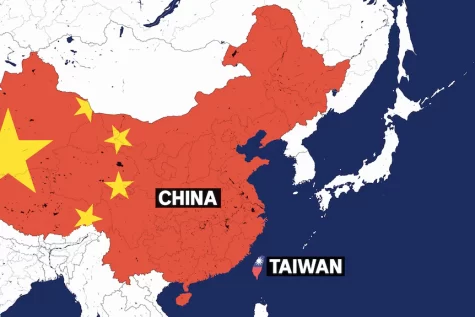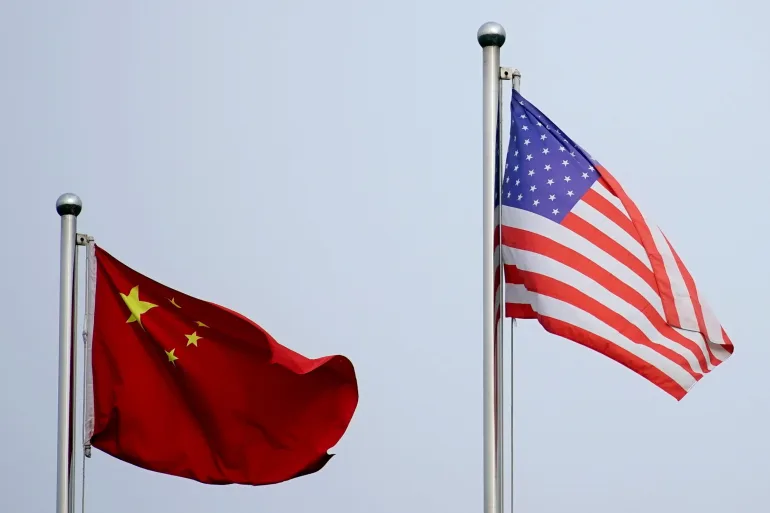Chilled Relations
Understanding the increased aggression of China towards the United States and the rest of the world.
Since the end of World War Two, democracy and communism have been at odds. In the last half of the 20th century, a dangerous war of words occurred between the democratic United States and the communist Soviet Union. Nuclear war seemed inevitable. Actual nuclear war was averted in 1991 when the Soviet Union dissolved. This ultimately marked the end of the Cold War.
Jumping to the 21st century, shadows of the Cold War era are beginning to become more defined. Although the United States keeps its eyes on Russia, a different nation demands more attention: China.
While celebrating the 100th anniversary of the Communist Party in July, Xi Jinping, the president of China, told the world that those who get in the way of China will get “their heads bashed bloody against the Great Wall of steel.” In other words, “Stay out of the way of China and there won’t be bloodshed.”
Xi Jinping directs this threat at the United States who is seen as the biggest threat to China’s worldwide dominance. Beginning before the turn of the century, China made economic, political, and military dominance its long-term goal.
“The CCP has spent $3 trillion over the past three decades building a military that is designed to defeat Chinese neighbors while blunting American power,” said Micheal Beckly of The Atlantic. “China’s geopolitical aims are not a secret. Xi, like his predecessors, desires to make China the preponderant power in Asia and, eventually, the world.”
Even in the face of this growing aggression from China over the years, the United States has been slow to see the nation as a formidable threat. Instead, America has focused on economic opportunities in the country. America encouraged China to join the World Trade Organization in 2001 in hopes that the country would adhere to open market trade policies. The opposite happened as China has continued to engage unfairly in multilateral trade, according to Katie Silver of BBC. Recently there has been a shift of focus from China’s economic opportunities to the nation’s aggression.
“Countries have recently become less enthralled by China’s market and more worried about its coercive capabilities and aggressive actions,” said Beckly.
In response to this aggression, and to maintain their own interests, the United States, Australia, and United Kingdom (AUKUS) formed an alliance in September in order to combat China’s increasing dominance in the Indo-Pacific and the world economy. Along with this, nations in the Indo-Pacific have begun to increase military capabilities in fear of China.
So, with this aggression, would China really go to war in order to achieve its dominance in the Indo-Pacific?
Thomas Christensen of Columbian University answered this when he said, “The Chinese Communist Party wages war when it perceives an opening window of vulnerability regarding its territory and immediate periphery, or a closing window of opportunity to consolidate control over disputed areas.”
America has indeed opened a window to the opportunity of consolidation in the region, and China sees it. This opportunity is exemplified through the withdrawal of American forces from Afghanistan in August. On a world stage, 13 U.S. troops died and thousands of both Americans and Afghans were left behind at the mercy of the Taliban. The same Afghan government the United States had supported and trained for 20 years, was left stranded by the U.S. and ultimately fell to the Taliban.
There are concerns that if China perceives that America has abandoned its ally in the Middle East, then America might abandon its allies in the Indo-Pacific, specifically Taiwan. In this case, an invasion of Taiwan by China would be inevitable.
According to Beckly, “Beijing is a remarkably ambitious power, one determined to make China whole again by ‘reuniting’ Taiwan with the mainland.”

As China doubles down on its “right” to Taiwan, the United States has continued to vow support for the sovereign nation. Ned Price from the State Department emphasized that American support for Taiwan is “rock solid,” saying “we have also been very clear that we are committed to deepening our ties with Taiwan,” according to Politico.
Ultimately, Taiwan has become a flashpoint in the strained relations between the two nations, and China isn’t helping.
“China, over its National Day weekend at the beginning of the month (October), sent a record 149 military aircraft southwest of Taiwan in strike group formations — in international airspace but into the island’s buffer zone, prompting Taiwan to scramble its defenses,” said the Associated Press. “China announced it had carried out beach landing and assault drills in the mainland province directly opposite Taiwan.”
But, this aggression towards Taiwan is just the start of what will happen in the Indo-Pacific region if China’s aggression continues. China also wants to expand its claim over disputed islands in the South China Sea along with control over the sea itself, which the U.S. and many other nations condemn.
Not only is outward aggression a concern for the United States, but also what is going on internally in regards to its weapons development.
“China tested a nuclear-capable hypersonic missile in a move that caught U.S. intelligence by surprise, according to a new report,” said Peter Aiken of Fox News. “The missile launched in August and circled the globe before speeding towards its target, which it missed by about two-dozen miles according to three individuals briefed on the intelligence.”
The United States Chairman of the Joint Chiefs of Staff, General Milley, is considering this a “Sputnik” moment, referring to the satellite launched by the Soviet Union that started the Space Race. As of now, the United States has not tested a missile with capabilities like the one launched by the Chinese.
Many are concerned that the launch is showing where conflict could possibly go in the future, nuclear. According to Tom O’Connor of Newsweek, China will have “700 deliverable nuclear warheads by 2027,” and “at least 1,000 warheads by 2030.”
It is doubtful, though, that China would engage in nuclear war as the Pentagon is “believed to consist of about 5,550 warheads,” said O’Connor. With the situation so volatile, anything can happen.
As interactions between the U.S. and China are beginning to mirror that of the U.S. and Soviet Union, the next steps for both nations come into focus for the de-escalation of the situation. If the nations continue down the path of Cold War, it could lead to further destabilization and even full-out war in the Indo-Pacific. But, there is always the chance that things can be avoided if the United States and China are able to settle their differences and come to an agreement. As of now, what will happen remains to be seen.
Your donation will support the student journalists of Elkhorn North High School. Your contribution will allow us to purchase equipment and cover our annual website hosting costs.












